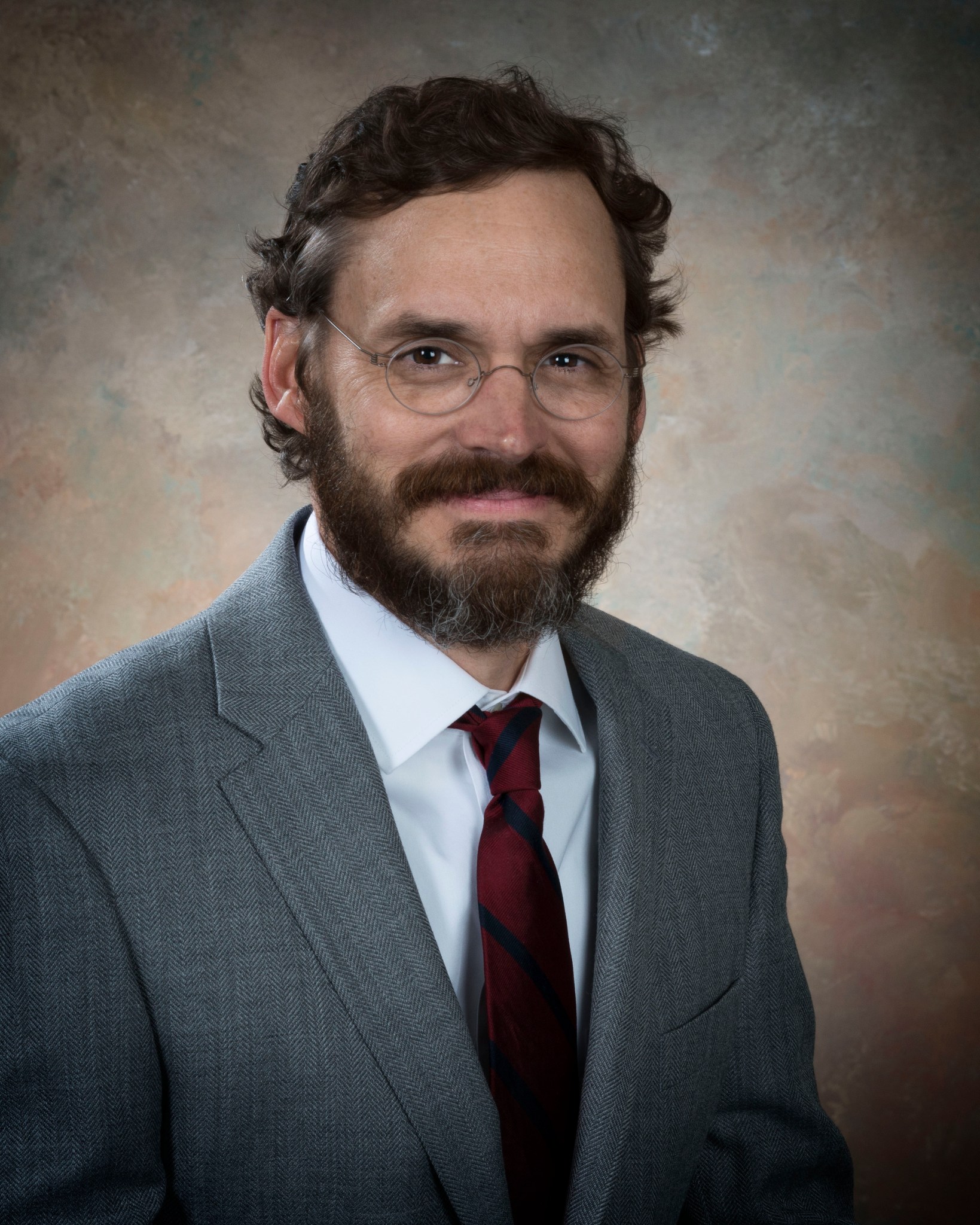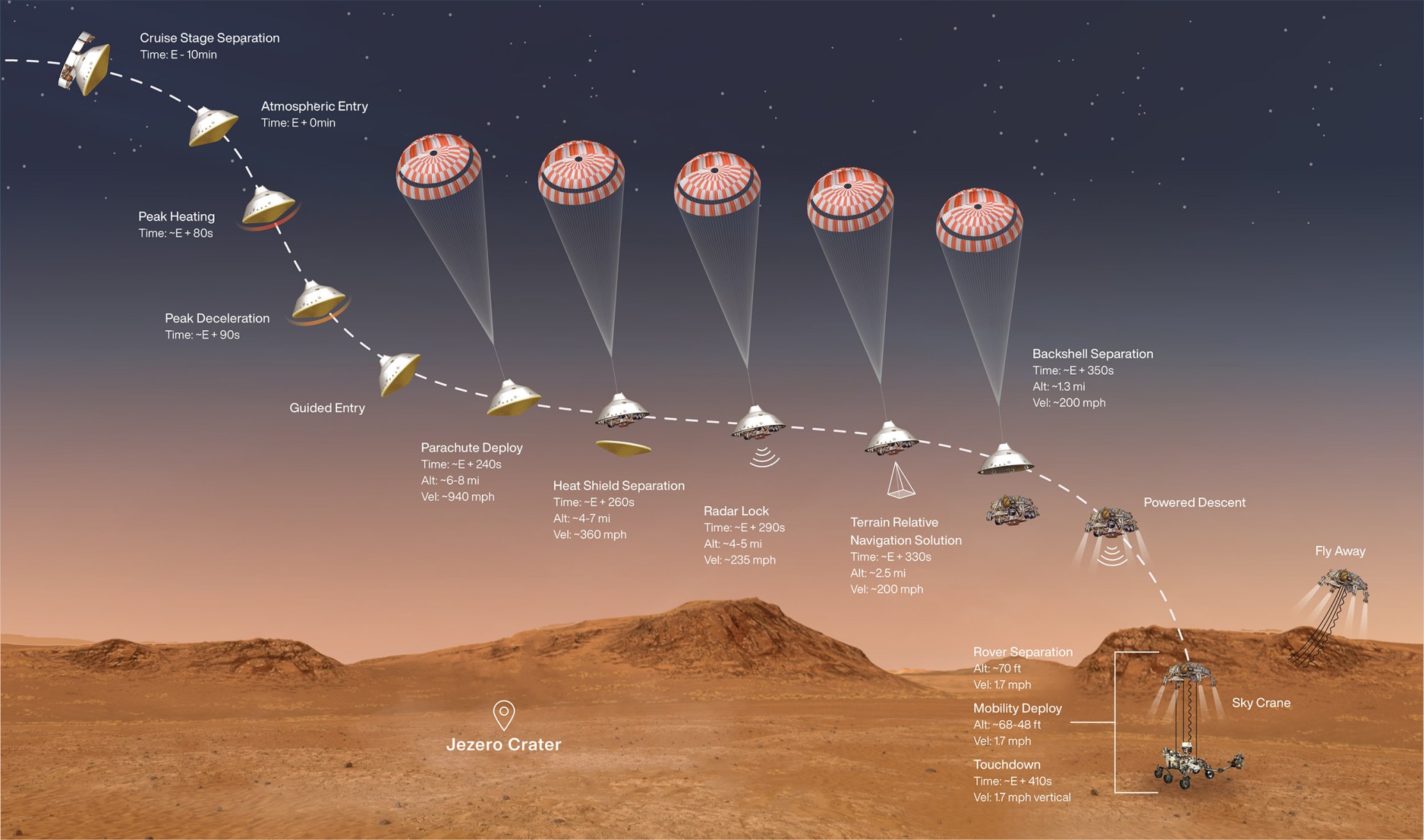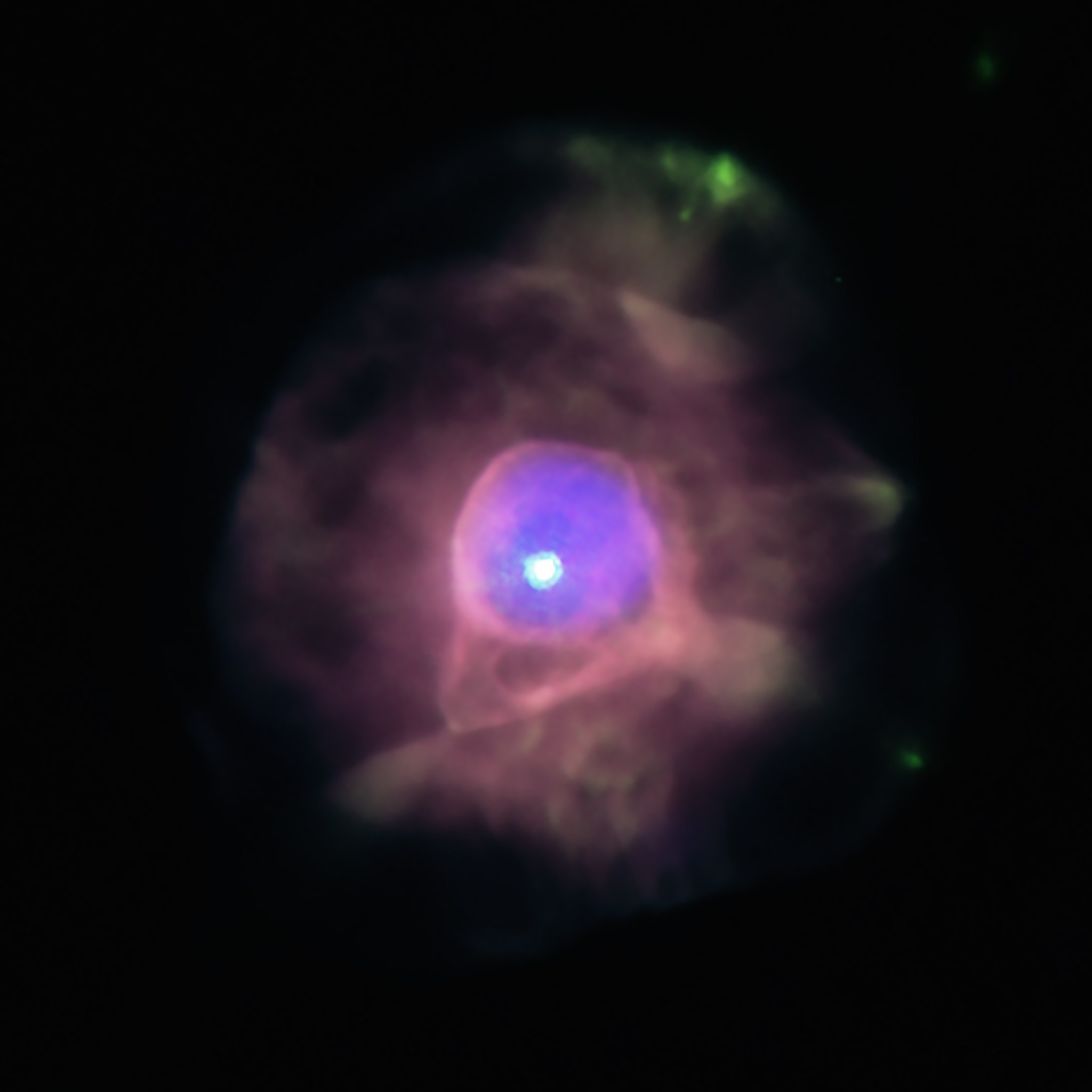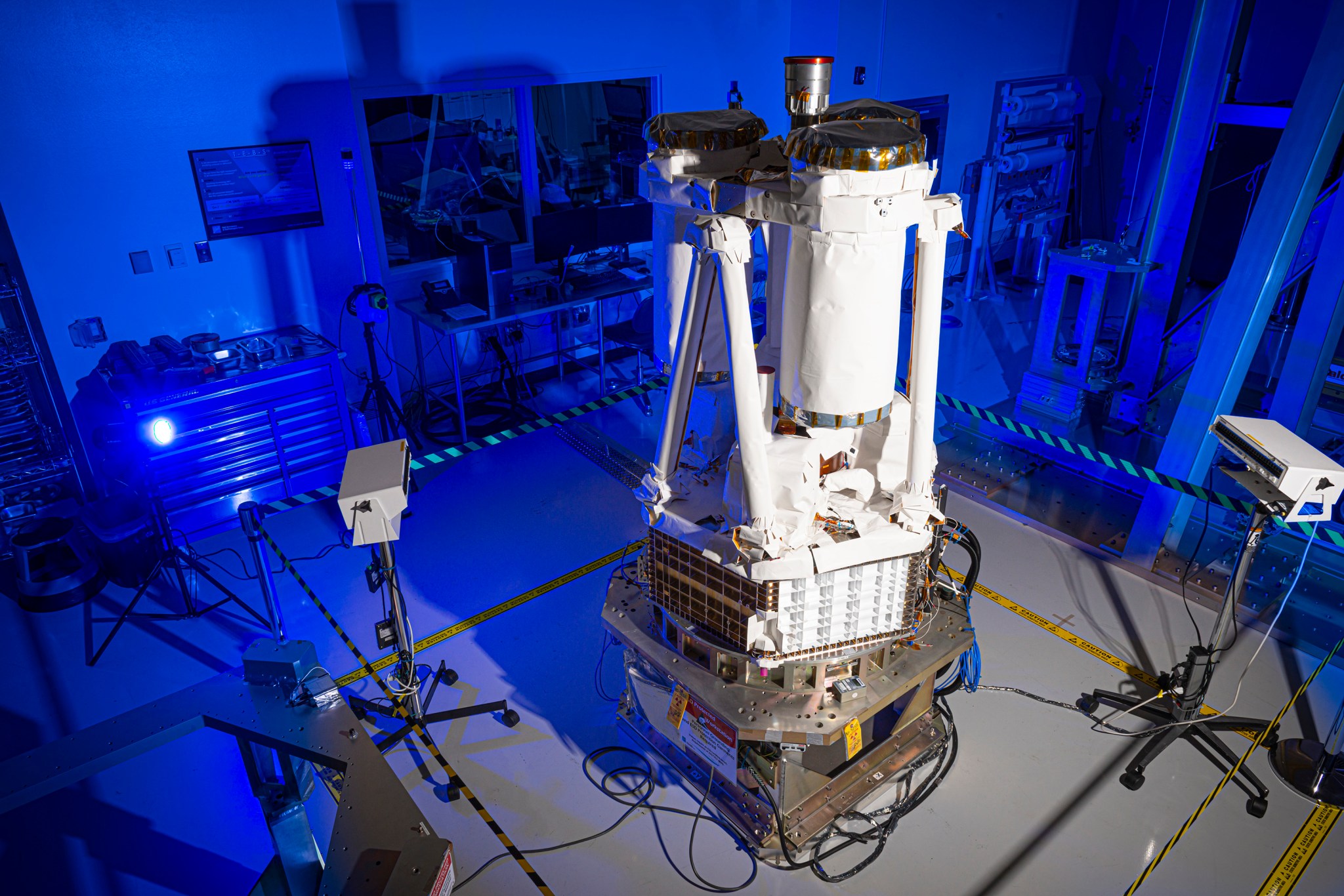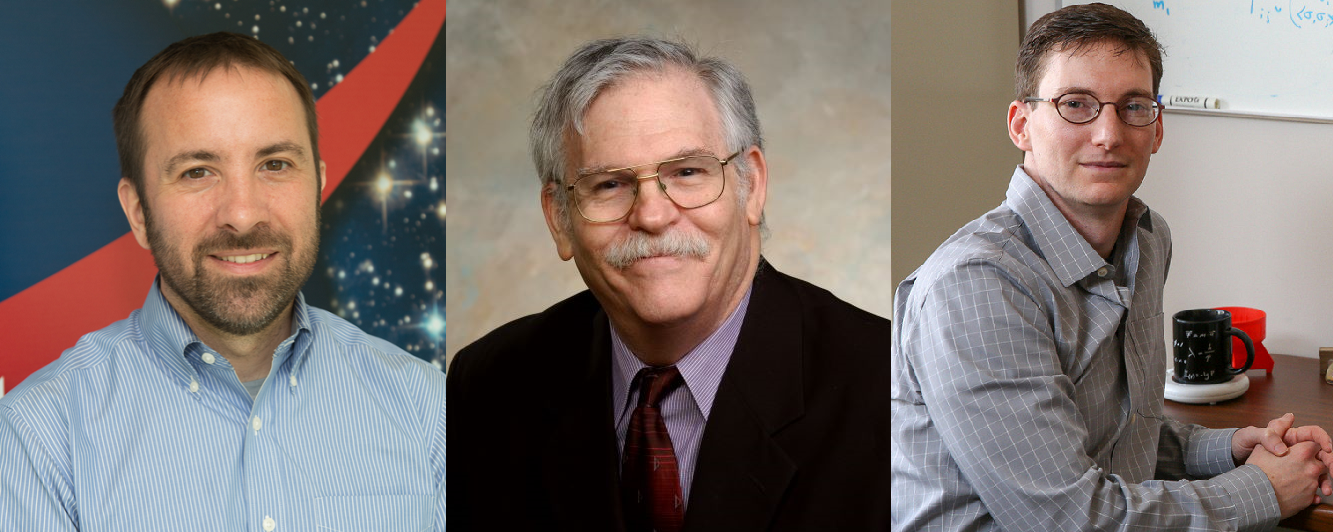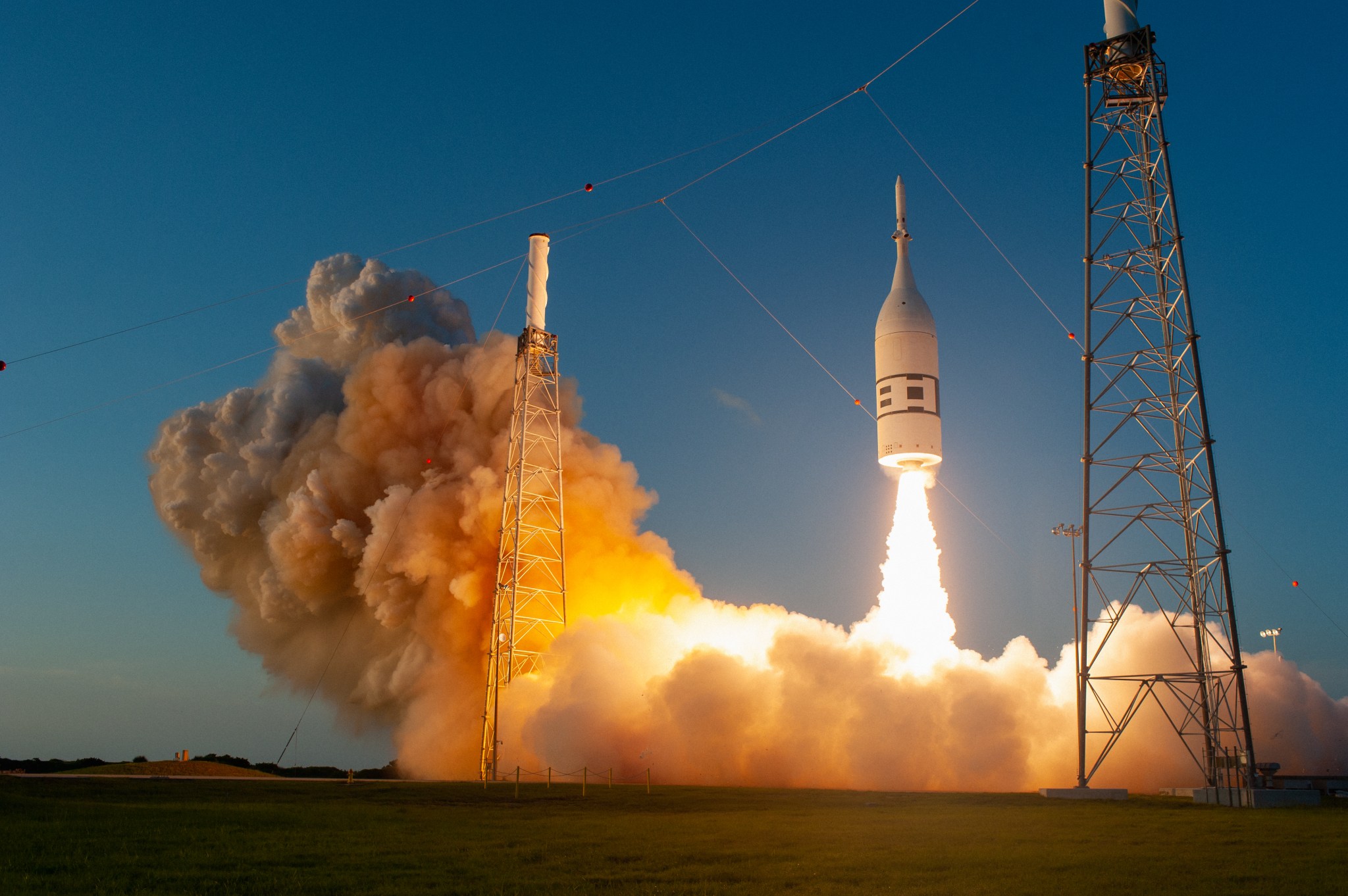In This Week’s Star
- Don Holder Named Deputy Director of Marshall’s Engineering Directorate
- NASA Test Teams Prepare SLS Core Stage for Second Hot Fire Test
- Team Members Invited to Virtually Participate in Mars Perseverance Rover Landing Activities
- Into the Limitless: Marshall Astrophysicists Plumb Mysteries of the Cosmos
- Marshall Leads Launch Abort System Integration, Transition
- Five Team Members Recognized as HEO HErO
- Music, Poetry, Education, Food to be Featured at Marshall’s Black History Month Event
- Mike Bolger, manager of Exploration Ground Systems at Kennedy, to Deliver Mission Success is in Our Hands Lecture
- NASA’s Lucy Spacecraft Receives Third Instrument, Highlighted on ‘This Week @NASA’
- This Week in NASA History: SA-9 Launches – Feb. 16, 1965
Don Holder Named Deputy Director of Marshall’s Engineering Directorate
Don Holder has been reassigned to the position of deputy director of the Engineering Directorate at NASA’s Marshall Space Flight Center. He was previously deputy director of the Space Systems Department since May 2019.
Holder will be jointly responsible for the Marshall’s largest organization, comprised of more than 2,000 team members. He will lead the design, testing, evaluation, and operation of flight hardware and software associated with space transportation, spacecraft systems, science instruments, and payloads under development at the center.
Holder joined Marshall in 1986 as a quality engineer supporting the Shuttle Propulsion Office. Since then, he has held various technical leadership roles and has distinguished himself as a subject matter expert in environmental control and life support systems. From 1989 to 1999, Holder was the water recovery systems engineer supporting the development of water recovery technologies for the International Space Station.
He supported the Environmental Control and Life Support Systems Project in multiple positions, including Design Team lead, technical assistant, and assistant chief engineer from 2000 to 2008. As assistant chief engineer of the Ares I Crew Exploration Vehicle Service Module from 2006 to 2007, Holder was also deputy chief engineer to the service module chief engineer at NASA’s Glenn Research Center, providing flight hardware expertise to project- and program-level engineering to support service module projects.
In 2008, Holder returned to the International Space Station Program as a project chief engineer, providing leadership for Marshall-produced flight hardware for the station. From 2011 to 2013, he was chief of the Mechanical Fabrication Branch in the Space Systems Department, where he led a workforce of engineers and technicians and managed the numerous facilities required to support Marshall’s manufacturing needs. He was deputy chief engineer of the Flight Programs and Partnerships Office from 2013 to 2014, then was appointed to the senior-level position of the office’s chief engineer in mid-2014 and subsequently Human Exploration Development and Operations chief engineer in 2017.
NASA Test Teams Prepare SLS Core Stage for Second Hot Fire Test
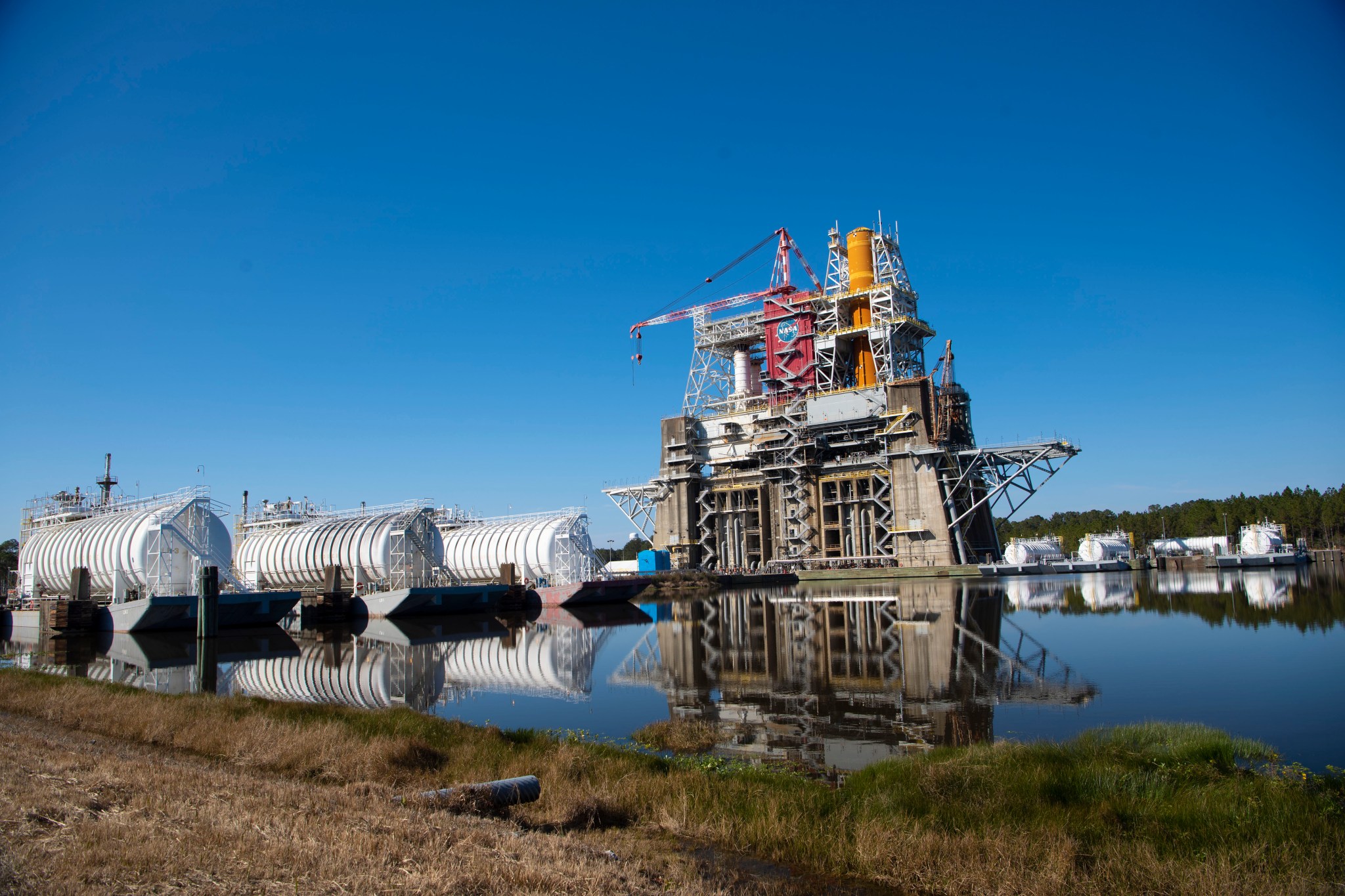
NASA test teams at the agency’s Stennis Space Center have completed refurbishment activities and are preparing the core stage of NASA’s Space Launch System for a second Green Run hot fire test, targeted for the week of Feb. 22. During refurbishment, teams thoroughly inspected the stage, dried its four RS-25 engines, and made minor repairs to the engines and thermal protection system. Technicians are also modifying and testing the Green Run software for the stage’s flight computers based on data from the first Green Run hot fire Jan. 16. The team adjusted parameters used by the software logic, which allows the flight computers to automatically monitor a variety of parameters and control the test during the terminal countdown and after engine ignition. The updated Green Run software was tested in the Systems Integration Lab at NASA’s Marshall Space Flight Center, which has avionics and flight computers identical to the ones in the core stage. The team is preparing the core stage, B-2 Test Stand, and the Stennis Test Control Centers for the hot fire test. (NASA)
Team Members Invited to Virtually Participate in Mars Perseverance Rover Landing Activities
After nearly seven months and millions of miles traveling through the vacuum of space, it’s almost time for NASA’s Mars 2020 Perseverance rover to blaze one final trail, as it passes through the Martian atmosphere and lands on the Red Planet at 2:55 p.m. CST, Feb. 18.
Perseverance’s primary job will be to seek signs of ancient life and collect samples of rock and regolith for possible return to Earth.
For Caleb Fassett, a planetary scientist at NASA’s Marshall Space Flight Center, the impending touchdown is the culmination of years of work. Fassett championed Jezero Crater as the right landing spot for the rover. The crater is believed to be an ancient river delta, rich in clays and other minerals that will help scientists unravel Mars’ complicated geologic history.
Vaneeza Rupani, a high school student at Tuscaloosa County High School in Northport, Alabama, named Ingenuity, the helicopter that Perseverance will deploy after landing. Ingenuity is a technology demonstration to test powered flight on another world.
Team members, their families, and friends are encouraged watch, follow, and participate with the mission. Live landing commentary originating from NASA’s Jet Propulsion Laboratory will start at 1:15 p.m. on landing day on NASA Television, the agency’s website, and YouTube.
There are numerous ways to participate.
- Register to follow along by email or social media
- Team members will receive email updates and access a curated resource page, social interactions, and a virtual passport stamp following landing by joining the Virtual Guest Program.
- Those who prefer to follow along on social media should join the virtual NASA Social. Participants will be able to connect with space enthusiasts, receive a NASA Social badge, ask questions, and take part in other virtual activities.
- Check out interactive experiences, including a photo booth that allows users to pose next to the Perseverance rover, send their names on the next mission to Mars, listen to the differences between sounds on Mars and Earth, and more at the mission’s website.
- A Perseverance landing toolkit page provides additional details about all the activities planned for landing week, as well as additional links for learning more about the rover and helicopter.
People can also stay connected with the mission on social media, and let others know they’re following the landing by using the hashtag #CountdownToMars and tagging these Twitter, Facebook, and Instagram accounts: @NASA, @NASAJPL, @NASAMars, and @NASAPersevere.
For more about Perseverance, visit here. For more about Ingenuity, visit here.
Into the Limitless: Marshall Astrophysicists Plumb Mysteries of the Cosmos
By Rick Smith
Editor’s note: This is Part 4, the conclusion of a series showcasing science wins at NASA’s Marshall Space Flight Center in 2020 – and highlighting Marshall research across the unique science disciplines that drive NASA’s mission in 2021 and beyond.
The field of high-energy astrophysics covers study of a vast range of cosmic objects, events, and phenomena, from black holes and neutron stars, to powerful gamma ray bursts, gravitational wave events, and other extreme phenomena.
“Astrophysics research, like all scientific study, flows into development work and practical engineering innovations,” said David Burns, manager of Marshall’s Science and Technology Office. “A deeper understanding of the universe and its origins leads to new chemical compounds, new metal alloys, and new technological advances.”
Marking 21 years of X-ray observations in space in 2020, NASA’s Chandra X-ray Observatory remains NASA’s flagship mission for X-ray astronomy, playing a vital role in unlocking the mysteries of the universe.
“Chandra continues to be an indispensable observatory for advancing NASA’s strategic science goals, making science discoveries at the same workhorse pace it has for the past two decades,” said Helen Cole, Chandra program manager at Marshall, which continues to oversee the program for the agency. The Smithsonian Astrophysical Observatory’s Chandra X-ray Center controls Chandra science activities and flight operations from its facilities in Cambridge and Burlington, Massachusetts, respectively.
In 2020 alone, Chandra helped researchers comb through distant galaxy clusters in search of elusive particles called axions which could hold the key to string theory, or the cosmic “theory of everything.” It observed stellar debris hurtling away from a supernova site at more than 20 million miles per hour, its speed unchanged even 400 years after the blast, and contributed to the study of hundreds of supermassive black holes to determine why some expel superpowered beams of materials called jets and others do not.
In 2020, the Chandra team also continued to engage audiences around the world with the observatory’s data and discoveries, including innovative Galactic Center VR and Reach Across the Stars education apps. They even used an innovative process called data sonification to convert multiwavelength information gleaned by Chandra and other NASA observatories into a stunning galactic symphony – truly the music of the spheres.
Though Chandra may be the most well-known of Marshall’s astrophysics missions, it’s just one tool in the science arsenal. NASA’s Imaging X-Ray Polarimetry Explorer, set to launch this November, is dedicated to measuring X-ray polarization from a variety of sources, from black holes to exploded stars. A collaboration between Marshall and the Italian Space Agency, its work will complement observations from Chandra and other telescopes now in space, deepening human understanding about the nature of these mysterious objects, their environments, and the cosmos itself.
Led by principal investigator Martin Weisskopf at Marshall, IXPE was selected as a NASA Small Explorer mission in 2017. It consists of three identical X-ray telescopes, each containing a set of nested grazing incidence mirrors. Marshall built and calibrated the mirror assemblies and delivered them to prime contractor Ball Aerospace’s Colorado facilities in September 2020 for assembly, integration, and environmental testing.
“Reaching this milestone is a testament to the experience, commitment, and expertise of the IXPE team and our partners around the world,” said Weisskopf, who first conceived of the mission 30 years ago. “We’re all looking forward to providing world-class science and expanding our view of the X-ray universe.”
Ball manages spacecraft development, aided by the University of Colorado in Boulder. NASA’s Goddard Space Flight Center manages the Explorers Program for the agency’s Science Mission Directorate.
Since 2001, the Laser Interferometer Gravitational-Wave Observatory, or LIGO – sister facilities at the California Institute of Technology in Pasadena and the Massachusetts Institute of Technology in Cambridge – has scanned deep space for cosmic gravitational waves, studying the fundamental nature of gravity.
“Until the success of LIGO, almost everything we knew about the universe came from light,” said Tyson Littenberg, principal investigator of the LIGO research group at Marshall. “Gravitational wave observations are now firmly part of the toolbox for understanding some of the most exotic objects and violent events in the universe.”
In 2020, Littenberg co-authored a paper on the first clear detection of an intermediate-mass black hole, a rarity among these celestial phenomena. LIGO has been a forerunner in black hole investigations since 2015, when it detected the first mergers between black holes – ultra-powerful events which produced gravitational waves of greater power than is radiated as light by all the stars in the observable universe at any given time.
The National Science Foundation funds LIGO.
Marshall astrophysicist Daniel Kocevski was among recipients of a 2020 NASA Group Achievement award for his work on the NASA Gravitational Wave Task Force. Funded by the Science Mission Directorate, the task force provided recommendations for future studies in gravitational wave astrophysics.
Kocevski received further acclaim in 2020 when his proposed StarBurst project was selected for development by NASA’s Astrophysics Pioneers program. StarBurst will monitor the skies for high-energy gamma rays from events such as the merger of neutron stars, synchronizing its observations with simultaneous detection of gravity waves by LIGO and other instruments.
The method of monitoring such events is known as multi-messenger astrophysics. It relies on multiple large and small observatories and instruments working together to observe the same phenomena, delivering more data from a variety of wavelengths, spectrums, and sources – and it underpins a driving principle of scientific research.
“When engineers develop new ways to do things, they patent those innovations,” Burns said. “Across NASA, our scientists’ first thought is to publish, to make their discoveries accessible to everyone. They share wisdom and data across the science community.”
Marshall researchers exemplify that credo. Whether it’s Earth science, planetary science, heliophysics, astrophysics, or the biological and physical sciences that intersect all those areas of expertise and underpin so much International Space Station research, Marshall stands at the cusp of NASA’s science endeavors.
The goal is the same across all disciplines, Burns added. “It’s about creating opportunities, learning to mitigate and avoid threats, and offering hope for a brighter future,” he said. “We don’t still want to be trying to solve the same problems 10-20 years from now. Our scientists want to answer questions today, to create a better world for our children.”
Smith, a Manufacturing Technical Solutions employee, supports Marshall’s Office of Strategic Analysis & Communications.
Marshall Leads Launch Abort System Integration, Transition
By Taylor Goodwin
Teams across NASA’s Marshall Space Flight Center are preparing the agency’s Launch Abort System – a component positioned atop the Orion crew module to protect astronauts in launch – for upcoming Artemis missions.
Marshall’s Scott Huzar began managing the Launch Abort System integration and transition to production operations after NASA’s Langley Research Center closed out the Launch Abort System Project Office. “Seeing this work transition to our center is incredible,” Huzar said. “We’re ready to take this project to the next stage of production and continue progressing toward a safe and successful launch.”
The Launch Abort System is divided into two parts: the fairing assembly – a shell composed of a lightweight composite material that protects the capsule from the heat, wind, and acoustics of the launch, ascent, and abort environments – and the launch abort tower, which includes the system’s three motors.
In the case of an emergency, three solid rocket motors work together to propel the astronauts to safety. The abort motor pulls the crew module away from the rocket, the attitude control motor steers and orients the capsule, then the jettison motor ignites to separate the Launch Abort System from Orion prior to parachute deployment to ensure a safe crew landing.
“This design offers the highest thrust and acceleration escape system ever tested,” said Joseph Pelfrey, manager of Marshall’s Human Exploration Development & Operations Office. “The puller-style system with the tower above the spacecraft is the first of its kind capable of controlled orientation after separating from the rocket. The opportunity to contribute to such a historic project has provided the Marshall team with invaluable experience in human space exploration.”
The Launch Abort System team recently celebrated their progress after receiving the Aviation Week Network 2020 Program Excellence Award, which honors exceptional programs and projects across the aerospace and defense industry. The award recognized the team for the successful Orion Ascent Abort-2 flight test, which challenged the team to manufacture, assemble, and launch the test flight nearly seven months ahead of the baseline program schedule.
On July 2, 2019, the Ascent Abort-2 test flight performed a major Artemis program milestone as it flawlessly launched from Cape Canaveral Air Force Station’s Launch Complex 46. The test was the culmination of a successful design, development, integration, and test of the Launch Abort System, the booster, simulated crew module, avionics, and software. All the predetermined 38 flight test objectives were achieved, the planned abort occurred at the designated extreme flight test conditions, and all ground and flight data were successfully collected. The data immediately provided engineers and technicians with critical abort information used in the design, manufacture, and validation of systems needed for the Artemis I, Artemis II, and subsequent crewed, deep space missions.
The Ascent Abort-2 team was spread across the nation, with components developed from major and minor suppliers including Northrup Grumman, Aerojet Rocketdyne, Applied Composites, Moog, FMI, Taylor Devices, and Lockheed Martin’s Denver, Sunnyvale and Michoud facilities. The diverse, multi-organization AA-2 team came together to form a “close knit badge-less” team to test and deliver all hardware on an accelerated timeline, delivering seven months in advance of the contract date, and launching six months in advance of the baseline launch date.
In addition, during the Launch Abort System’s integration with the boost vehicle, team members were instrumental in helping to define the future Orion vehicle integration process. The strong technical background of the integrated team allowed for efficient resolution of technical and schedule critical issues during final assembly, resulting in 100% mission success.
“Looking forward,” Huzar said, “is what keeps the team going. Despite the many challenges of the past year, we are all still working to safely and successfully land the first woman and next man on the lunar surface.”
Goodwin, a Media Fusion employee, supports the Office of Strategic Analysis & Communications.
Five Team Members Recognized as HEO HErO
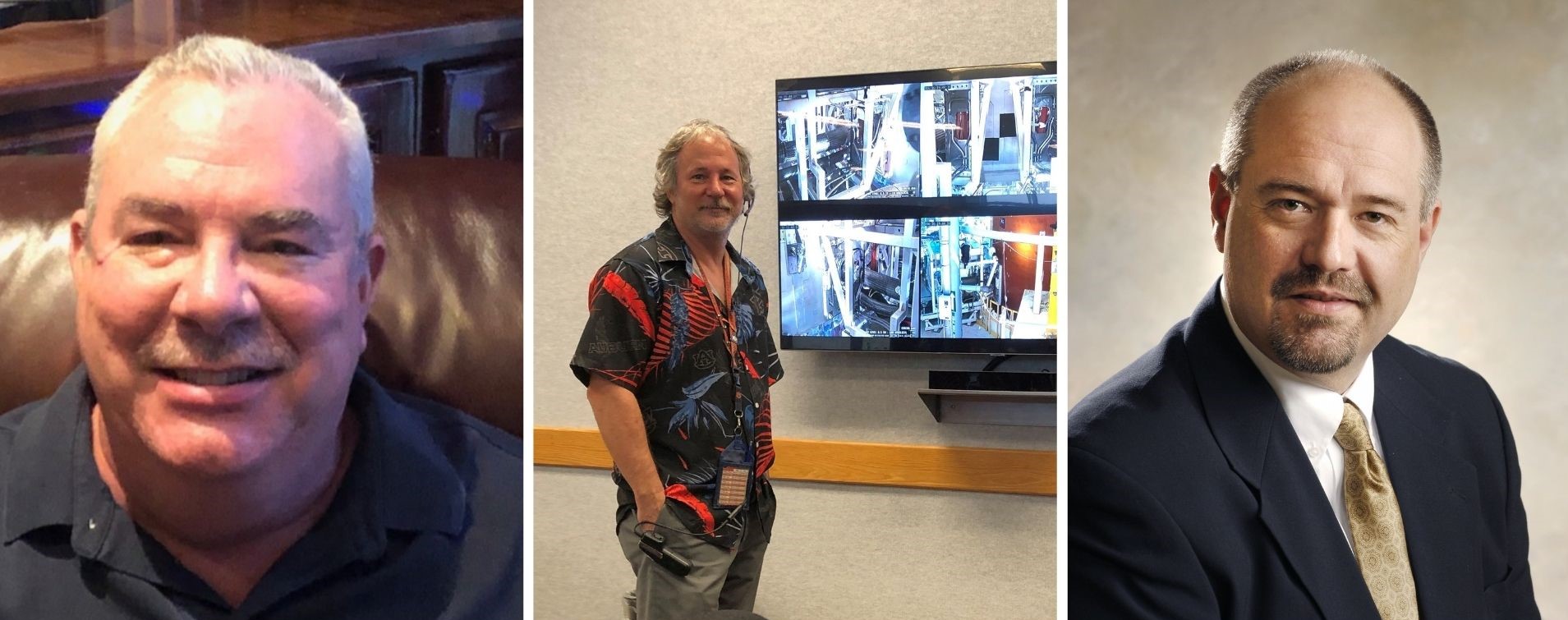
From left, Steve Davis, Thomas Erdman, and Ray Echols, along with James Reynolds and Ryan Stillwater, not pictured, are the latest team members from NASA’s Marshall Space Flight Center to be named a HEO HErO. Davis provides dedicated support as the Space Launch System cross-program agreements team lead, ensuring that key interdependencies for hardware, software, and data between the Artemis programs are documented and managed. Erdman was a driving force in brokering the operational agreements between the Exploration Ground Systems test, operation support contractor, and SLS prime contractors. Echols provides effective management of the Engineering Support Team training and the Engineering Support Facility development activities that will culminate in the SLS Engineering Support Center Operations Readiness Review for Artemis I. Reynolds oversaw the early planning of all payload activities during the International Space Station Expedition 64 timeframe as the payload planning manager. Planning this timeframe was a challenge due to the uncertainly of the launch manifest and associated payloads. Stillwater developed a complete set of requirements for the SLS Exploration Upper Stage and Block 1B Development Office, supporting the prime contractor’s schedule for holding a critical design review. Each week, NASA’s Human Exploration and Operations Mission Directorate recognizes HEO HErOes, team members from across the agency who have made vital contributions in their support of NASA’s mission to land the first woman and next man on the Moon by 2024. (NASA)
Music, Poetry, Education, Food to be Featured at Marshall’s Black History Month Event
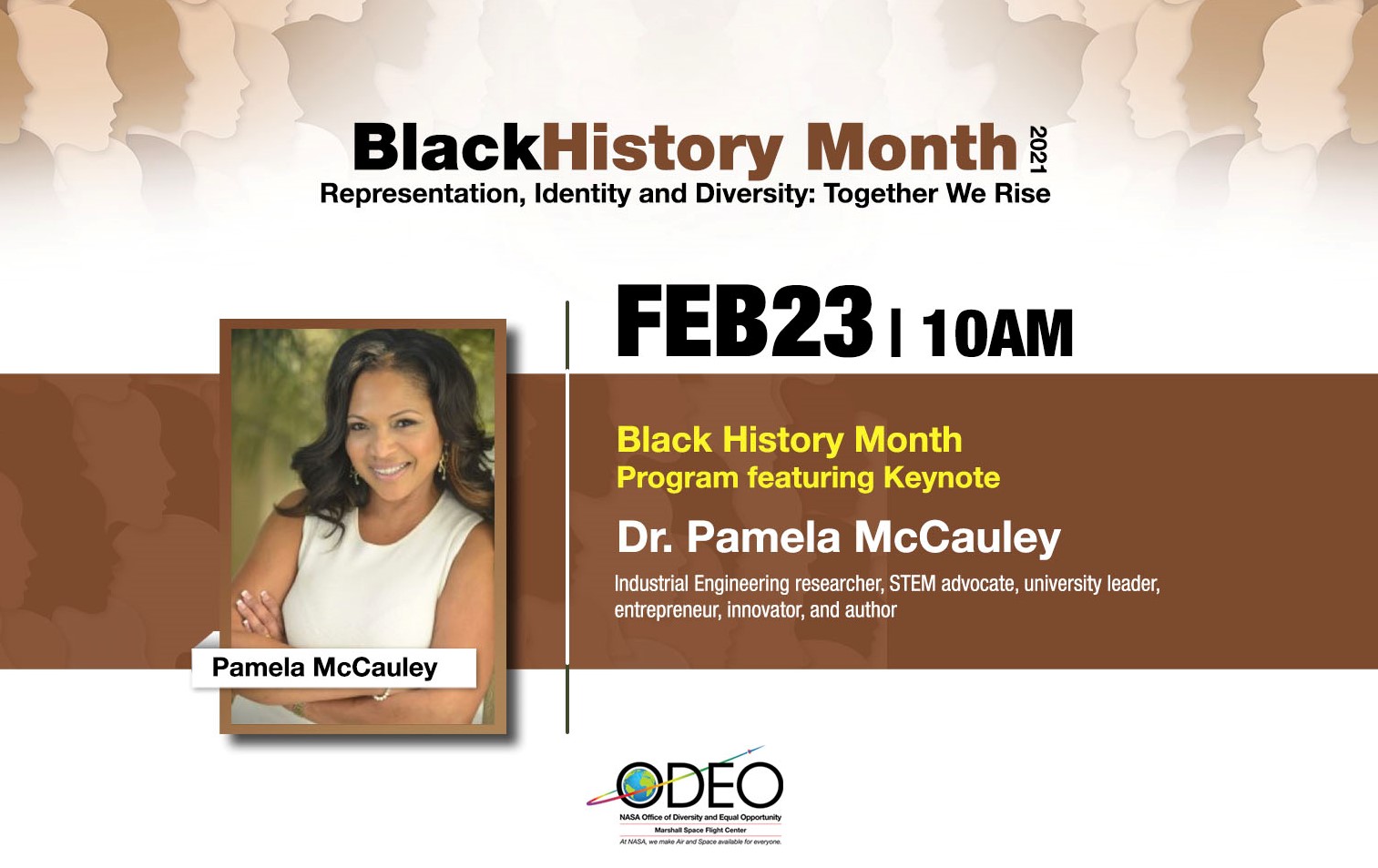
NASA’s Marshall Space Flight Center will host a Black History Month program Feb. 23. The theme is “Representation, Identity and Diversity: Together We Rise.” The keynote speaker will be Pamela McCauley, associate dean for academic programs in the Wilson College of Textiles at North Carolina State University in Raleigh. McCauley, who is also a science, technology, engineering, and mathematics education advocate, author, and internationally recognized industrial engineering researcher, will discuss the importance of representation and diversity in STEM. The virtual event will take place at 10 a.m. via Microsoft Teams. Activities will include music, poetry, a cooking demonstration from a local chef, and ethnic food recipes shared by Marshall team members. For questions or for a reasonable accommodation for this event, contact program coordinator and equal employment specialist Amanda Otieno. (NASA)
Mike Bolger, manager of Exploration Ground Systems at Kennedy, to Deliver Mission Success is in Our Hands Lecture
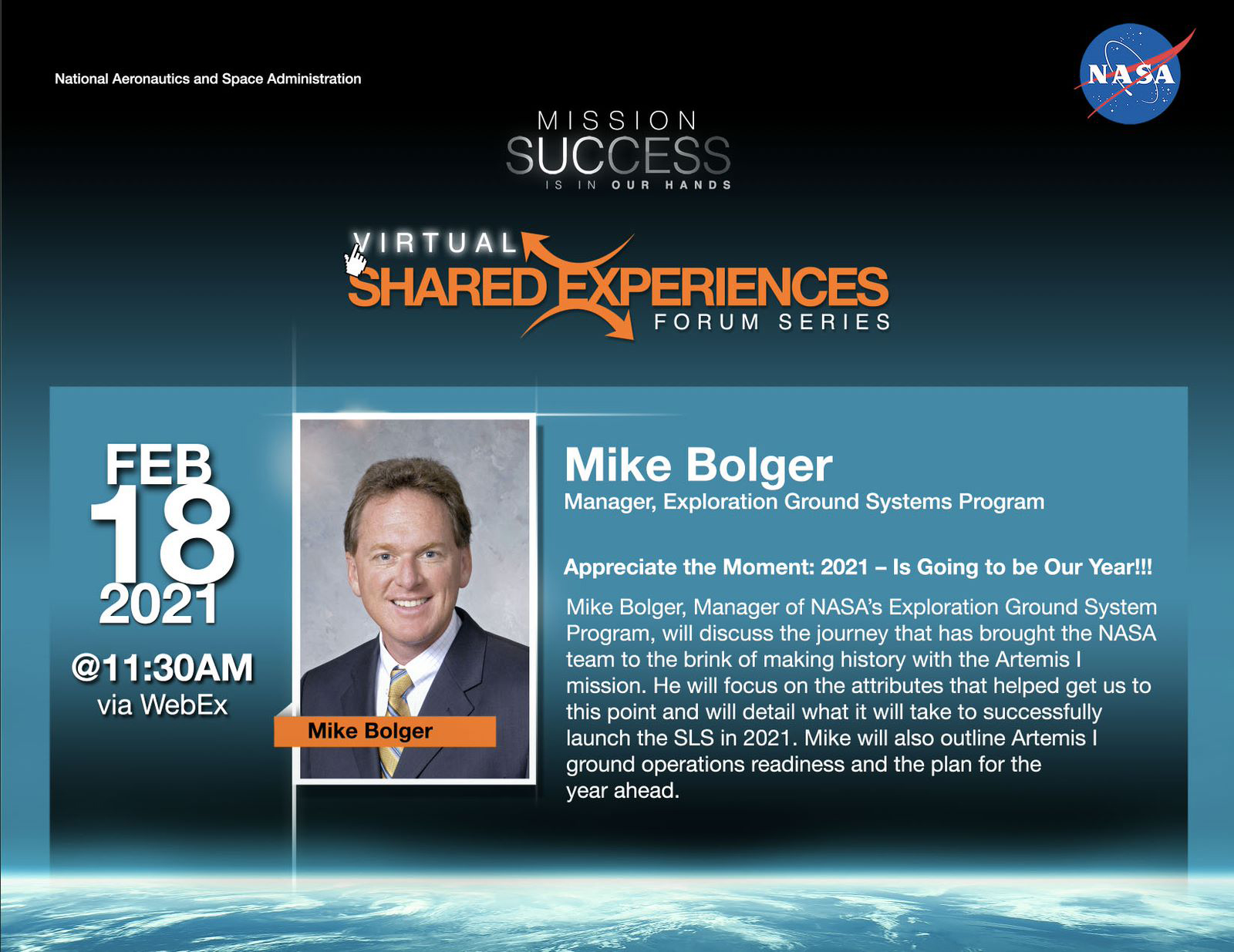
Mike Bolger, manager of the Exploration Ground Systems Program at NASA’s Kennedy Space Center, will give a presentation via Webex at 11:30 a.m. Feb. 18, as part of the Mission Success is in Our Hands virtual lecture series. He will discuss recent program history as NASA prepares to launch Artemis I– the first flight of NASA’s Space Launch System rocket. Bolger will focus on attributes that helped the team achieve prelaunch milestones and will be required to successfully launch on mission day. He will also present ground operations team readiness and their path to the pad for the year ahead. The Mission Success Is in Our Hands initiative is a campaign led by the Safety and Mission Assurance Directorate at NASA’s Marshall Space Flight Center and partner Jacobs Engineering of Huntsville that promotes and strengthens Marshall’s focus on mission, hardware, and crew safety. (NASA)
NASA’s Lucy Spacecraft Receives Third Instrument, Highlighted on ‘This Week @NASA’
NASA’s Lucy spacecraft recently had its third and final scientific instrument installed and is featured in “This Week @NASA,” a weekly video program broadcast on NASA-TV and posted online.
The Lucy mission, targeted for launch in October, will be the first to explore the Trojan asteroids – a population of small bodies that share an orbit with Jupiter. The spacecraft’s last instrument, L’Ralph, is actually two instruments in one that will help Lucy determine the composition of the Trojan asteroids, and provide insight into the early history of the solar system.
The Trojans are time capsules from the birth of the solar system more than 4 billion years ago. The swarms of Trojan asteroids associated with Jupiter are thought to be remnants of the primordial material that formed the outer planets. These primitive bodies hold vital clues to deciphering the history of the solar system and, perhaps, even the origins of organic material on Earth.
The mission takes its name from the fossilized human ancestor – called “Lucy” by her discoverers – whose skeleton provided unique insight into humanity’s evolution.
Lucy is a project of the Science Mission Directorate’s Discovery Program, managed by NASA’s Marshall Space Flight Center.
View this and previous episodes at “This Week @NASA” on NASA’s YouTube page.
This Week in NASA History: SA-9 Launches – Feb. 16, 1965
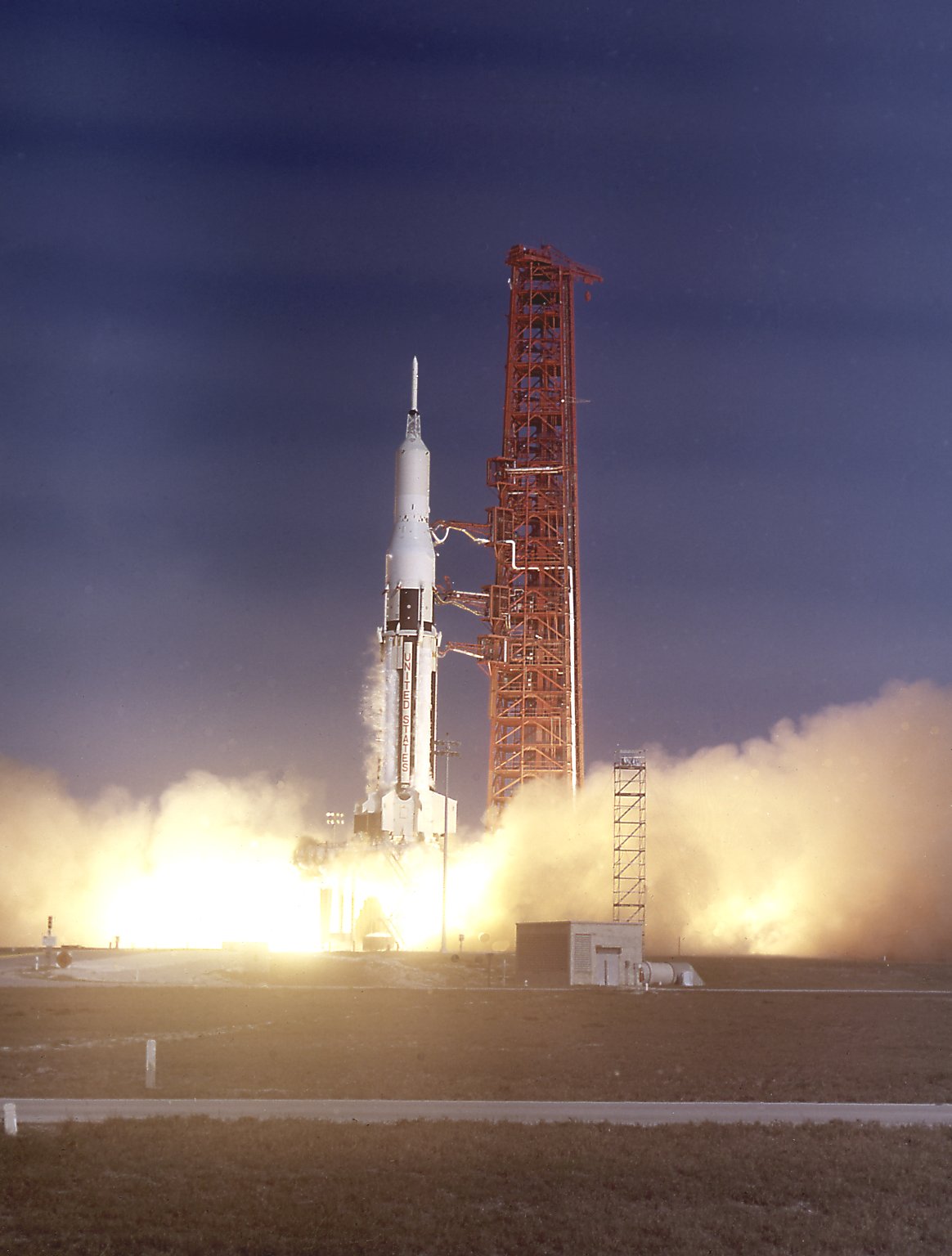
This week in 1965, SA-9, the eighth Saturn flight, launched from Cape Kennedy Launch Complex in Florida. This was the first Saturn flight with an operational payload – the Pegasus I meteoroid detection satellite. Pegasus was developed by Fairchild Stratos Corporation for NASA through the agency’s Marshall Space Flight Center. A Pegasus satellite also flew aboard the SA-8 and SA-10 missions in 1965. After being placed in orbit around Earth, the satellite electronically recorded the size and frequency of particles in space and compared the performance of protected and unprotected solar cells as important preliminaries to crewed flights to the Moon. Today, Marshall is playing a vital role in the Artemis program by developing the Space Launch System, the backbone of NASA’s exploration plans and the only rocket capable of sending humans to the Moon and Mars. The NASA History Program is responsible for generating, disseminating, and preserving NASA’s remarkable history and providing a comprehensive understanding of the institutional, cultural, social, political, economic, technological, and scientific aspects of NASA’s activities in aeronautics and space. For more pictures like this one and to connect to NASA’s history, visit the Marshall History Program’s webpage. (NASA)





























